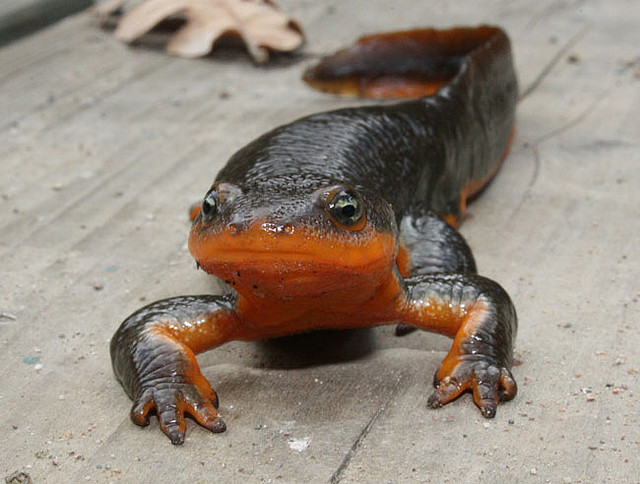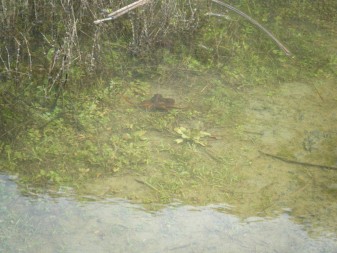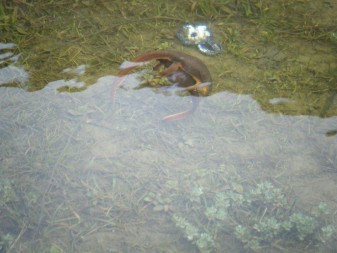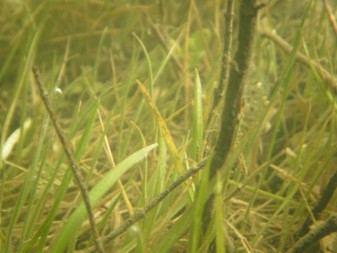
California newts are migrating from land to water. Photo by Yostkr.
Over the last couple of weeks I've visited the seasonal ponds in the East Bay at Sibley Volcanic Preserve and small creeks at Briones Regional Park and found California newts engaging in their spring rituals of courtship and mating. The long, dry winter and late, sporadic rains have likely made this less than a banner year for amphibians. Newts spend the Bay Area’s dry months of summer and fall “estivating,” holed up in underground burrows, gopher holes, or under logs and rocks, waiting for the rain. Wet weather calls them to action. Leaving their upland burrows, newts migrate, one slow, tiny step at a time, braving roads and other dangers. They gather in their natal ponds and streams to mate and lay their eggs.

Their courtship rituals are ancient and complex. Drawn to the water, both males and females enter and begin the search for that special someone, or two, or many. Males undergo a physical transformation with their tails changing shape to allow for faster swimming and their front feet develop thickened, rough pads for grasping slippery females. When a male finds a willing female he grabs her from above. They glide around underwater together for hours or even days, surfacing to breathe and swimming through cattail and grassy forests. He rubs her forehead with his chin, waiting for her lift her head. If she’s not interested, she keeps her head down. Some newts play the numbers game and come together in clusters with multiple males and females.

Mating success occurs when the male guides the female to the bottom of the pond where he deposits his sperm packet. It looks like a small, fantastic sculpture with the vital genetic material poised like an apostrophe at the top. She takes it into her body and holds it for some time before fertilizing eggs as she lays them. She may mate with multiple males. The female finds underwater plant stems to lay her clusters of eggs upon, encasing them in a gelatinous mass. She may lay as many as 300 eggs in a mating season. The embryos develop underwater until they're ready to hatch. Once mating is completed, most adults head back to their upland feeding and hibernation areas, leaving the young to fend for themselves.

The perpetuation of the California newt species hangs in the balance with many hazards. A dry winter can create a host of problems. Egg masses can become exposed as the pond evaporates and the young may not make it. After hatching, young newts breathe water through their gills before they transform into air-breathing adults. If their ponds dry up too soon, they’re out of luck. Predators abound in the ponds, too. Garter snakes have a long history with newts and have developed immunity to their toxic skin. Some years the ponds are full of both garter snakes and newts. Introduced animals like crayfish and mosquito fish, and a new "super hybrid" species of salamander eat young newts. The adult's trek from their burrows to ponds and streams can be fatal with cars, bikes, and cattle claiming the lives of some of these tiny travelers. Even toxic skin can’t save them from being small, easy to overlook, and dependent on seasonal water.
